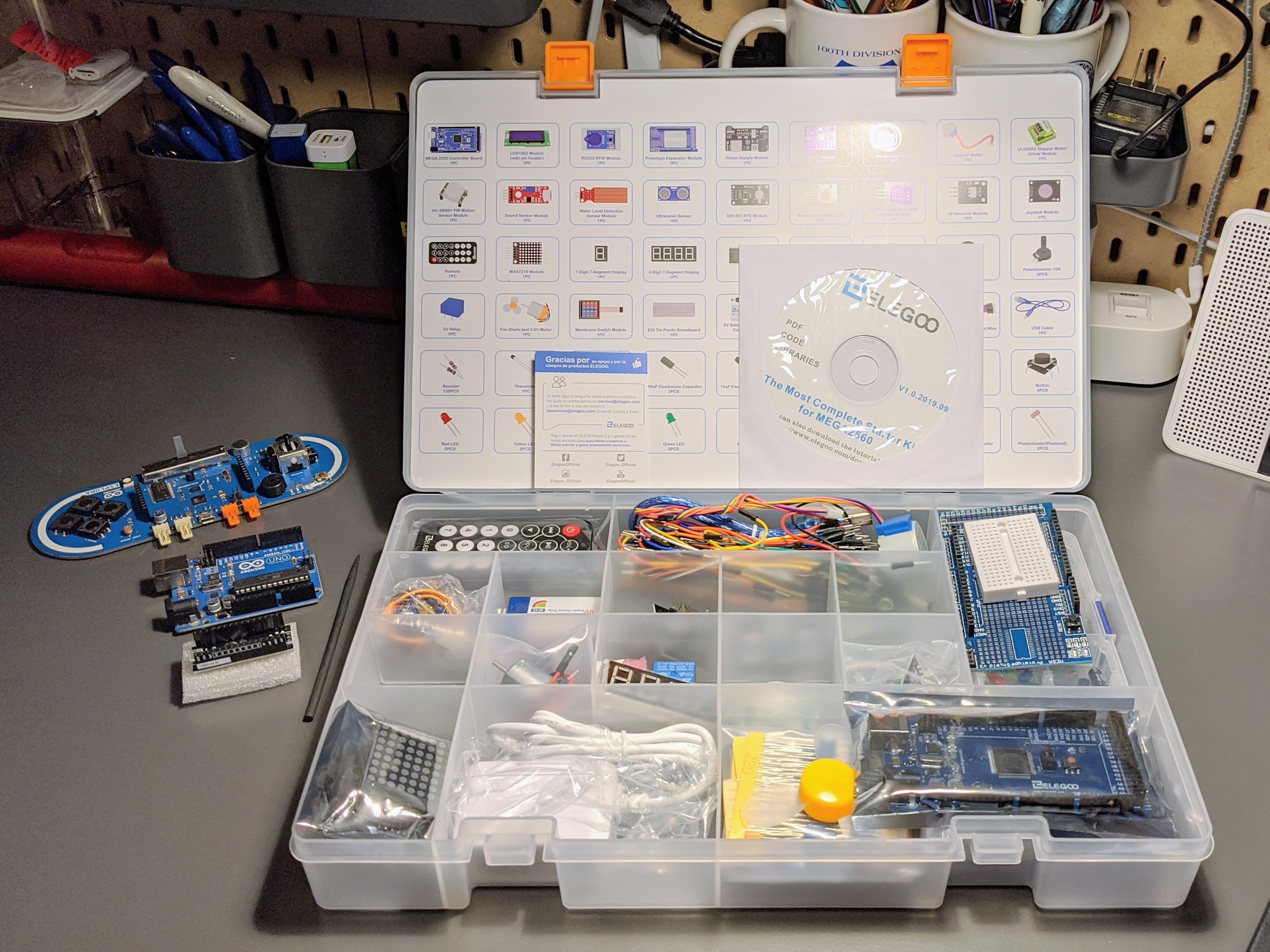
Retro computing with a touch of modern and the home for all things, retroCombs (aka Steven Combs).
Disclosure Statement: When you click on links to various merchants on this site and make a purchase, this can result in this site earning a commission. Affiliate programs and affiliations include, but are not limited to Amazon, the eBay Partner Network, and/or others.

OPEN THE BOX: Elegoo Arduino Mega Starter Kit
by Steven B. Combs, Ph.D.
I am priviledged to have the opportunity teach a course at our local Purdue Polytechnic Columbus campus. The course is TECH 120: Design Thinking in Technology. The focus of the course is to create solutions to modern problems, using software and hardware, while implementing the basics of design thinking.
During an email exchange with the director of the program (my boss) during fall 2019, we discussed the need to integrate physical computing concepts into the course. I was intrigued. Physical computing basics will significantly enhance student prototypes. After much research, I integrated the inexpensive kit below into the curriculum:

During the course, we will unpack our kits together and go over every component. In preparation for that excercise, and to provide an opportunity for someone who missed the class session, I prepared an unpacking video and placed it on YouTube. You can view the video below.
There are a few errors (aren’t there always!) and as you learn while watching, I recorded the whole thing once only to find it didn’t record! But that’s how you learn; you fail first.
INSIDE BASEBALL: This was the first time I used a multi-camera setup to record video. To manage the video switching, I utilized the free OBS Studio. I know I’ve only scratched the surface of that software’s capabilities and I look forward to learning more as I create additional content to support my teaching, blogging, or podcasting.
The title of the kit is quite the mouthful; as is the entire kit. The kit not only contains an Arduino Mega but also over 200+ components! While I was recording, my mind raced with “maker” ideas for myself and the students.
I am hopeful these kits will inspire students to create more sophisticated prototypes than what I normally see during the semester. This video may also help someone, other than a student, learn more about this kit and inspire them to purchase and create amazing things.
Drop me a comment below if you own this kit or what you think about the video. But please, go easy on me. It is my first multi-cam video. 😉